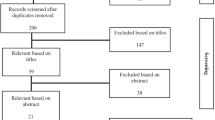Abstract
Much local and regional transport policy is attempting to increase cycling as an everyday mode of travel through infrastructure changes, education initiatives, and safety campaigns. While considerable research has examined the influence of the built form on cycling, less research has examined the barriers that prevent people who wish to cycle more (as part of their routine) from doing so. This study examines several factors influencing the frequency by which people do (and do not) cycle in a campus setting in a large metropolitan area. Mixed methods reveal differences between barriers to cycling as well as the relative strength of these barriers across categories of age, sex, and current mode used. A multinomial logit model, which controls for residential self-selection effects, predicts whether and how often a respondent cycles based on socio-demographic and trip characteristics. The presence of cycle paths is found to be strongly associated with a higher frequency of cycling commutes. Additionally, an analysis of stated barriers reveals effort and a lack of safety as the most important barriers to potential cyclists. Finally, a qualitative analysis of respondents’ open-ended responses confirms the influence of bicycle paths, but reveals other factors such as the importance of improved interactions among various street users. Findings from this research can be of benefit to transportation engineers and planners who are aiming to increase the use of cycling among various groups of commuters.

Similar content being viewed by others
References
Bauman, A., Rissel, C., Garrard, J., Ker, I., Speidel, R., Fishman, E.: Cycling: getting Australia moving—barriers, facilitators and interventions to get more Australians physically active through cycling. In: 31st Australasian Transport Research Forum, pp. 593–602 (2008)
Bergstrom, A., Magnusson, R.: Potential of transfering car trips to bicycle during winter. Transp. Res. Part A: Policy Pract. 37(8), 649–666 (2003)
Broach, J., Dill, J., Gliebe, J.: Where do cyclists ride? A route choice model developed with revealed preference GPS data. Transp. Res. Part A 46(10) 1730–1740 (2012)
Daley, M., Rissel, C.: Perspectives and images of cycling as a barrier or facilitator of cycling. Transp. Policy 18(1), 211–216 (2011). doi:10.1016/j.tranpol.2010.08.004
Damant-Sirois, G., Grimsrud, M., El-Geneidy, A.: What’s your type: a multidimensional cyclist typology. Transportation (2014). doi:10.1007/s11116-014-9523-8
Dill, J., McNeil, N.: Four types of cyclists? Examining a typology to better understand bicycling behavior and potential. Paper presented at the Transportation Research Board Annual Meeting Washington, D.C (2013)
Dill, J., Voros, K.: Factors affecting bicycling demand: Initial survey findings from the Portland region. Transp. Res. Rec. 2031, 9–17 (2007)
Forman, H., Kerr, J., Norman, G., Saelens, B., Durant, N., Harris, S., Sallis, J.: Reliability and validity of destination-specific barriers to walking and cycling for youth. Prev. Med. 46, 311–317 (2008)
Gatersleben, B., Appleton, K.: Contemplating cycling to work: attitudes and perceptions in different stages of change. Transp. Res. Part A: Policy Pract. 41, 302–313 (2007)
Geller, R. (2006). Four types of cyclists. http://www.portlandoregon.gov/transportation/article/237507
Heesch, K., Sahlqvist, S., Garrard, J.: Gender differences in recreational and transport cycling: a cross-sectional mixed-methods comparison of cycling patterns, motivators, and constraints. Int. J. Behav. Nutr. Phys. Activity 9(106), 1–12 (2012)
Jensen, M.: Passion and health in transport—a sociological analysis on transport behaviour. Transp. Policy 6, 19–33 (1999)
Kaczynski, A.T., Bopp, M., Wittman, P.: Association of workplace supports with active commuting. Prev. Chronic Dis. 7(6), 1–9 (2010)
Larsen, J., El-Geneidy, A., Yasmin, F.: Beyond the quarter mile: re-examining travel distances by active transportation. Can. J. Urban Res. 19(1), 70–88 (2010)
Manaugh, K., El-Geneidy, A.: Validating walkability indices: how do different households respond to the walkability of their neighbourhood? Transp. Res. Part D 16(4), 309–315 (2011)
Pooley, G.C., Horton, D., Scheldeman, G., Mullen, C., Jones, T., Tight, M., Chisholm, A.: Policies for promoting walking and cycling in England: a view from the street. Transp. Policy 27, 66–72 (2013)
Pooley, G.C., Horton, D., Scheldeman, G., Tight, M., Jones, T., Chisholm, A., Jopson, A.: Household decision-making for everyday travel: a case study of walking and cycling in Lancaster (UK). J. Transp. Geogr. 19(6), 1601–1607 (2011)
Prochaska, J., DiClemente, C.: Stages and processses of self-change of smoking: toward an integrative model of change. J. Consult. Clin. Psychol. 51(3), 390–395 (1983)
Schneider, R.: Theory of routine mode choice decisions: an operational framework to increase sustainable transportation. Transp. Policy 25, 128–138 (2013)
Shannon, T., Giles-Corti, B., Pikora, T., Bulsara, M., Shilton, T., Bull, F.: Active commuting in a university setting: assessing commuting habits and potential for modal change. Transp. Policy 13, 240–254 (2006)
Timperio, A., Ball, K., Salmon, J., Roberts, R., Giles-Corti, B., Simmons, D., Crawford, D.: Personal, family, social, and environmental correlates of active commuting to school. Am. J. Prev. Med. 30(1), 45–52 (2006)
Titze, S., Stronegger, W., Janschitz, S., Oja, P.: Association of built-environment, social-environment and personal factors with bicycling as a mode of transportation among Austrian city dwellers. Prev. Med. 47(3), 252–260 (2008). doi:10.1016/j.ypmed.2008.02.019
Ville de Montreal.: Three-year capital plan at a glance. (2013–2015). https://ville.montreal.qc.ca/pls/portal/docs/page/service_fin_fr/media/documents/PTI-2013-2015_bref_ANG.pdf
Willis, D., Manaugh, K., El-Geneidy, A.: Uniquely satisfied: exploring cyclists satisfaction. Transp. Res. Part F 18, 136–148 (2013)
Winters, M., Davidson, G., Kao, D., Teschke, K.: Motivators and deterrents of bicycling: comparing influences on decisions to ride. Transportation 38, 153–169 (2011)
Yeung, J., Wearing, S., Hills, A.: Child transport practices and perceived barriers in active commuting to school. Transp. Res. Part A 42, 895–901 (2008)
Author information
Authors and Affiliations
Corresponding author
Rights and permissions
About this article
Cite this article
Manaugh, K., Boisjoly, G. & El-Geneidy, A. Overcoming barriers to cycling: understanding frequency of cycling in a University setting and the factors preventing commuters from cycling on a regular basis. Transportation 44, 871–884 (2017). https://doi.org/10.1007/s11116-016-9682-x
Published:
Issue Date:
DOI: https://doi.org/10.1007/s11116-016-9682-x




